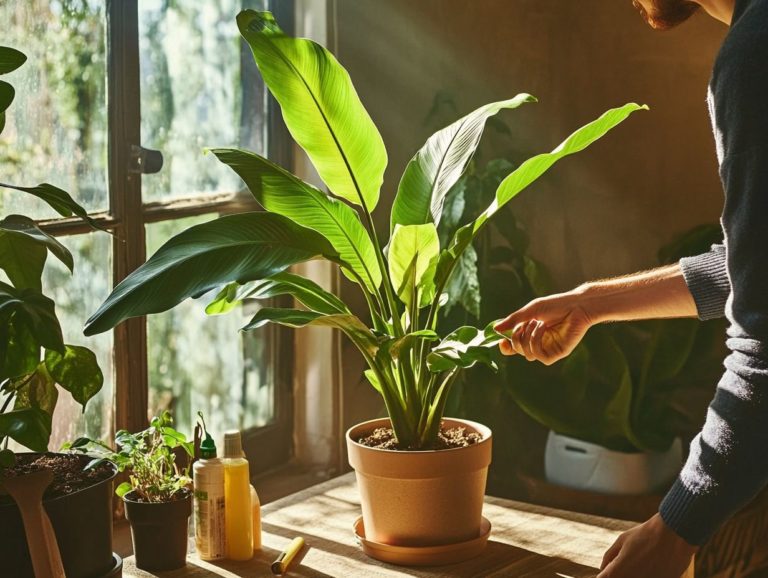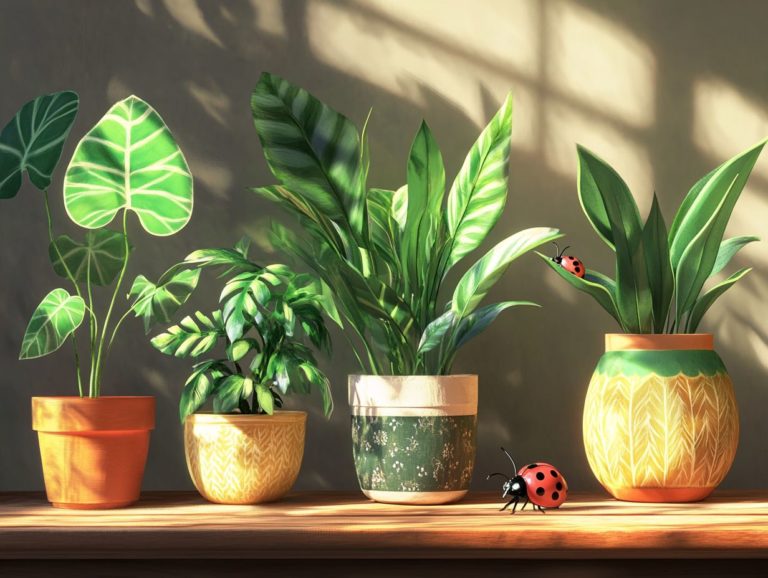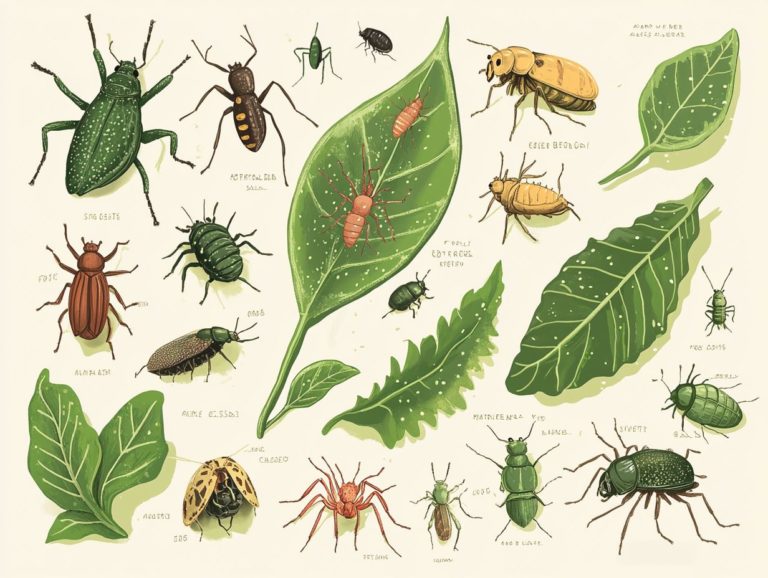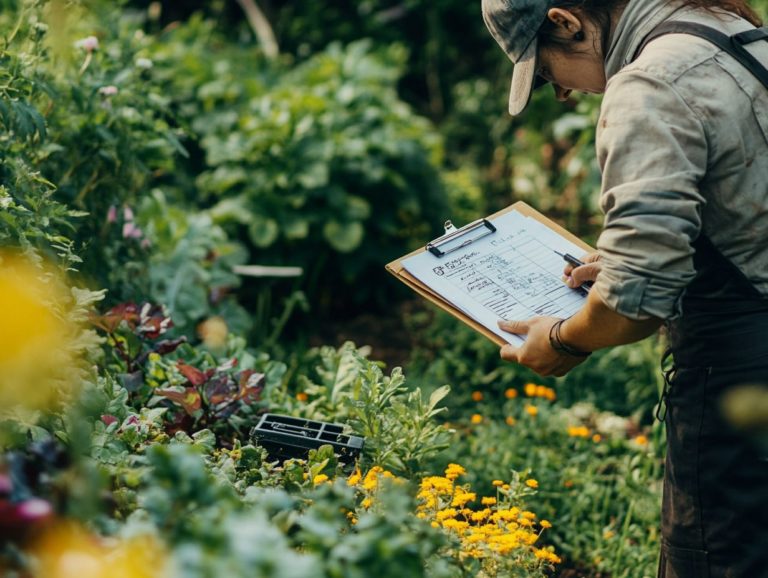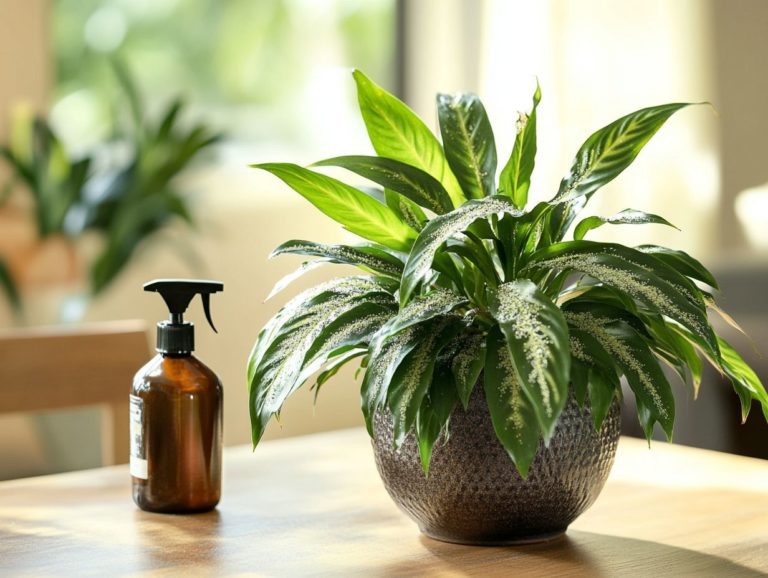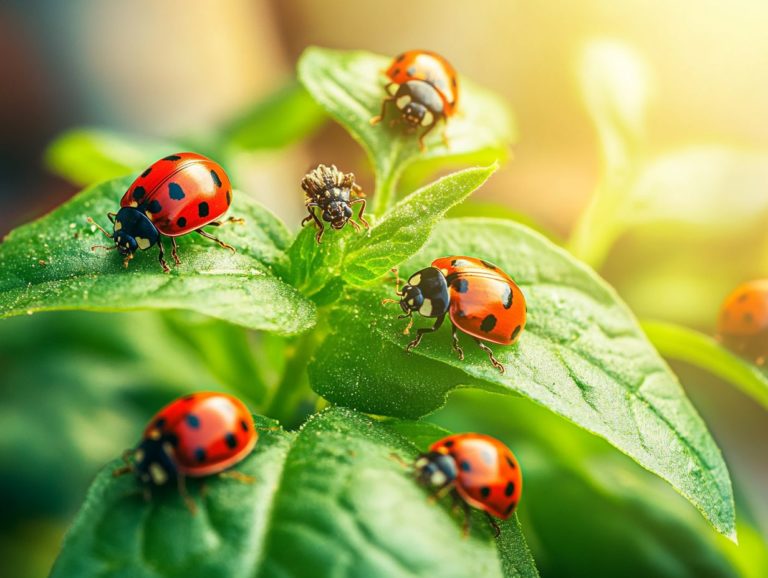5 Best Practices for Indoor Plant Hygiene
Indoor plants and houseplants can transform your home into a refreshing oasis. However, simply placing them on a sunny windowsill isn’t enough to keep them thriving.
Proper indoor plant hygiene and care for houseplants are crucial for ensuring your leafy companions flourish.
Explore the five best practices for keeping houseplants healthy, from selecting the right species for your space to implementing effective pest control strategies.
You ll learn how to avoid common pitfalls and gain valuable tips on watering, repotting, and fertilizing houseplants.
Whether you re a seasoned plant parent or just starting your green journey, these tips will help you cultivate a vibrant indoor garden.
Contents
- Key Takeaways:
- 1. Choose the Right Type of Plant for Your Space
- 2. Use Clean Soil and Pots
- 3. Regularly Dust and Wipe Down Leaves
- 4. Check for Pests and Diseases
- 5. Proper Watering and Drainage
- Why Is Indoor Plant Hygiene Important?
- Frequently Asked Questions
- What are the 5 best practices for indoor plant hygiene?
- Why is proper watering and drainage important for indoor plants?
- How often should I clean my indoor plant’s leaves and pots?
- What are some common pests and diseases that can affect indoor plants?
- Why should I use organic fertilizers for my indoor plants?
- How can I ensure my indoor plants receive enough sunlight and air circulation?
Key Takeaways:

- Choose the right type of plant for your indoor space, considering humidity and light conditions.
- Use clean potting mix and pots, and regularly dust the leaves to prevent pests.
- Know your plants’ water needs and ensure proper drainage to avoid root rot.
1. Choose the Right Type of Plant for Your Space
Choosing the right houseplant for your space is essential for maintaining vibrant, healthy greenery. You should consider factors like temperature, light conditions, and humidity levels, all of which play a significant role in the growth of indoor plants like philodendron, pothos, and African violets.
If your space offers bright, indirect light, spider plants will thrive beautifully, adding lushness to any room. On the other hand, bromeliads prefer a bit more humidity and can bring a splash of color and unique shapes to spaces like your bathroom.
Assessing the temperature of your environment is equally important. Cooler rooms may require hardier varieties that can withstand lower heat levels.
Conversely, if you have ample sunlight, you’ll have a broader selection, allowing you to curate a dazzling array of potted plants. Don t overlook moisture levels in the air; choosing plants that resonate with your space’s humidity will ensure they flourish.
2. Use Clean Soil and Pots
To ensure your houseplants thrive, it s vital to use clean soil and pots. This step helps prevent the introduction of pathogens and pests while providing a suitable potting mix for optimal plant care.
Utilizing fresh potting mixes not only enhances the nutrient profile but also improves drainage and aeration, both crucial for healthy roots. When selecting containers, consider the specific needs of your plants; some may flourish in terracotta, while others might prefer plastic or ceramic.
It s also smart to sterilize your pots before using them. You can do this with a diluted bleach solution or boiling water, effectively ridding them of lingering pathogens.
Keep an eye out for signs of poor soil quality, like stunted growth or yellowing leaves; these can indicate that it s time for a change.
3. Regularly Dust and Wipe Down Leaves
Regularly dusting and wiping down the leaves of your houseplants is an essential part of plant care. This practice significantly enhances photosynthesis, improves airflow, and ensures your plants remain healthy over time.
Incorporate techniques like using a damp cloth or a gentle spray of water to simplify this task and yield effective results. Opt for a microfiber cloth, slightly moistened to trap dust efficiently and allowing for a thorough clean without risking damage to delicate leaves.
Gentle sprays not only hydrate your plants but also help dislodge stubborn dirt. Clean leaves don t just look stunning; they also allow for optimal light absorption, promoting healthier growth and stronger resilience against pests and diseases.
By prioritizing this care routine, you can create an environment in which your plants, like jade plants and Aloe, truly thrive.
Start your plant journey today and watch your indoor garden come to life!
4. Check for Pests and Diseases
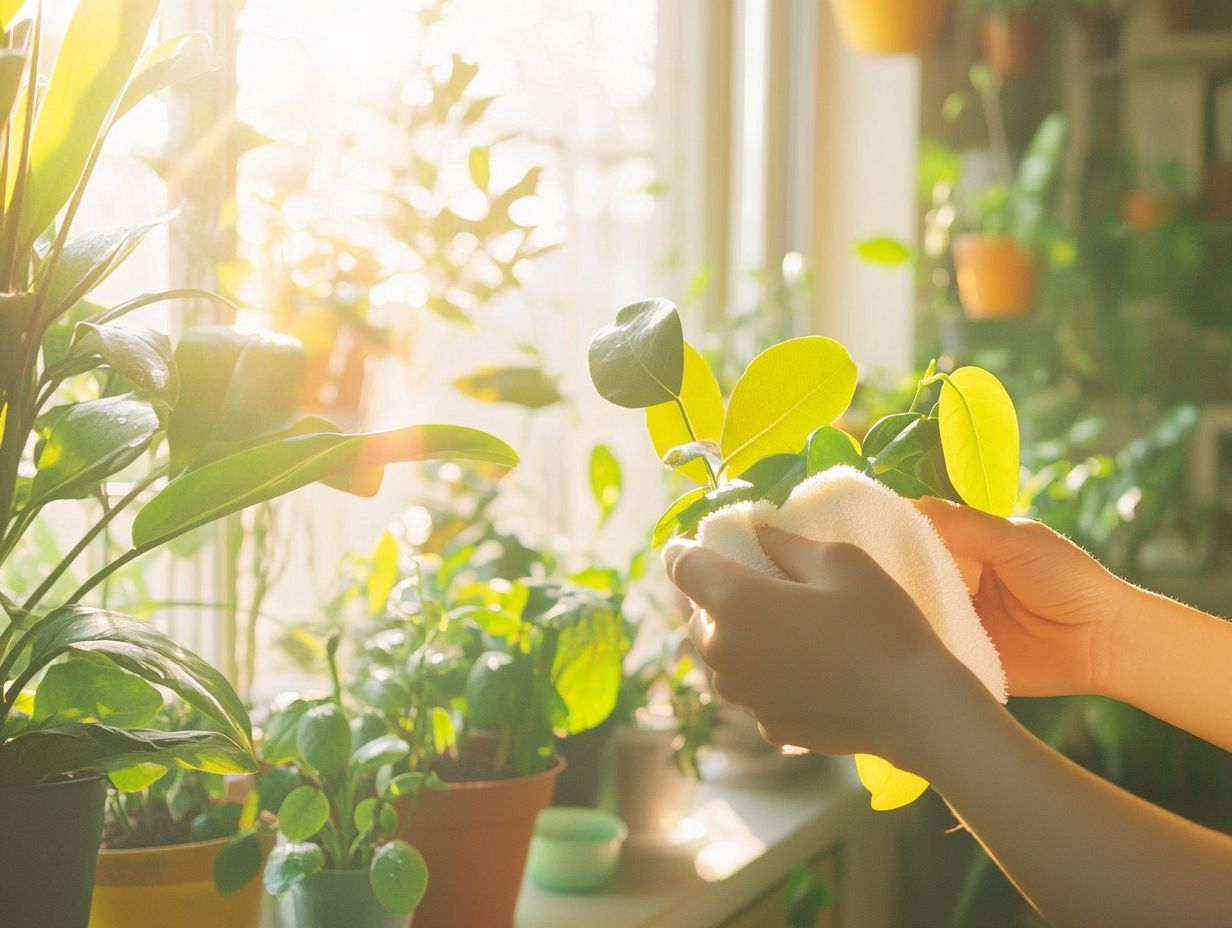
Regularly inspecting your houseplants for insect pests and diseases is essential for maintaining their health. Early detection can save you from issues like powdery mildew and pesky infestations by fungus gnats.
While houseplants are resilient, they can still fall victim to common pests such as aphids, spider mites, and mealybugs. These adversaries drain your plants’ vitality and can introduce diseases that hinder growth. Keeping the right humidity, or amount of moisture in the air around your plants, and ensuring ample air circulation is vital, or you risk losing your plants!
If you face an outbreak, consider using neem oil. It effectively disrupts the life cycles of many pests without harming your plants. By staying vigilant and proactive, you can cultivate a thriving indoor garden brimming with vibrant leaves and stunning blooms.
5. Proper Watering and Drainage
Understanding the water requirements and ensuring proper drainage for your houseplants is crucial. Overwatering or poor drainage can lead to root rot, a condition where the roots of your plant start to decay due to too much water, and other complications that threaten your plants’ health.
Each type of houseplant has its unique watering needs, influenced by factors like pot size, soil type, and the specific environmental conditions in your home. For example, succulents and cacti flourish in drier soils and need less frequent watering. Tropical species like ferns or peace lilies thrive in consistently moist environments.
Choose pots with drainage holes. This prevents excess water and promotes healthier roots. To determine the ideal watering frequency, consider the type and size of your plant along with the amount of light it receives. Adjusting your watering routine with the changing seasons can further elevate your plants’ vitality and well-being.
Why Is Indoor Plant Hygiene Important?
Indoor plant hygiene is pivotal for the health and longevity of your greenery. By maintaining cleanliness, you prevent pesky insect pests and common houseplant diseases while safeguarding the vitality of your beloved plants. Regularly cleaning the leaves enhances photosynthesis, allowing more light to penetrate and creating an inhospitable environment for dust mites and mold.
Simple practices like gently wiping leaves with a damp cloth, ensuring pots are free from algae, and routinely inspecting for any signs of pests are essential. Resources such as Better Homes & Gardens and Martha Stewart highlight that effective plant maintenance goes hand-in-hand with routines like debunking watering myths about indoor plants:
- Rotating plants for balanced sunlight exposure
- Ensuring proper drainage to prevent root rot
Together, these practices cultivate an environment where your indoor plants can flourish beautifully!
What Are the Common Mistakes People Make When It Comes to Indoor Plant Hygiene?
Common mistakes in indoor plant hygiene often arise from neglecting the fundamentals of plant care. Overlooking leaf dusting, improper watering, and failing to check for pests can lead to serious health issues for your beloved houseplants and introduce diseases.
While these might seem like minor details, they significantly impede growth and vitality. For example, dust accumulation not only blocks sunlight but also attracts pests. Meanwhile, overwatering can cause root rot, leaving the plant vulnerable to diseases.
By regularly checking soil moisture and using a damp cloth to clean the leaves, you can foster a healthier environment for your plants. Establishing a routine inspection schedule for pests like checking the undersides of leaves will help you catch any potential infestations before they escalate.
Understanding the specific needs of each type of plant is crucial and can lead to remarkable improvements in the overall health of your indoor garden.
How Can Overwatering Affect Indoor Plant Health?
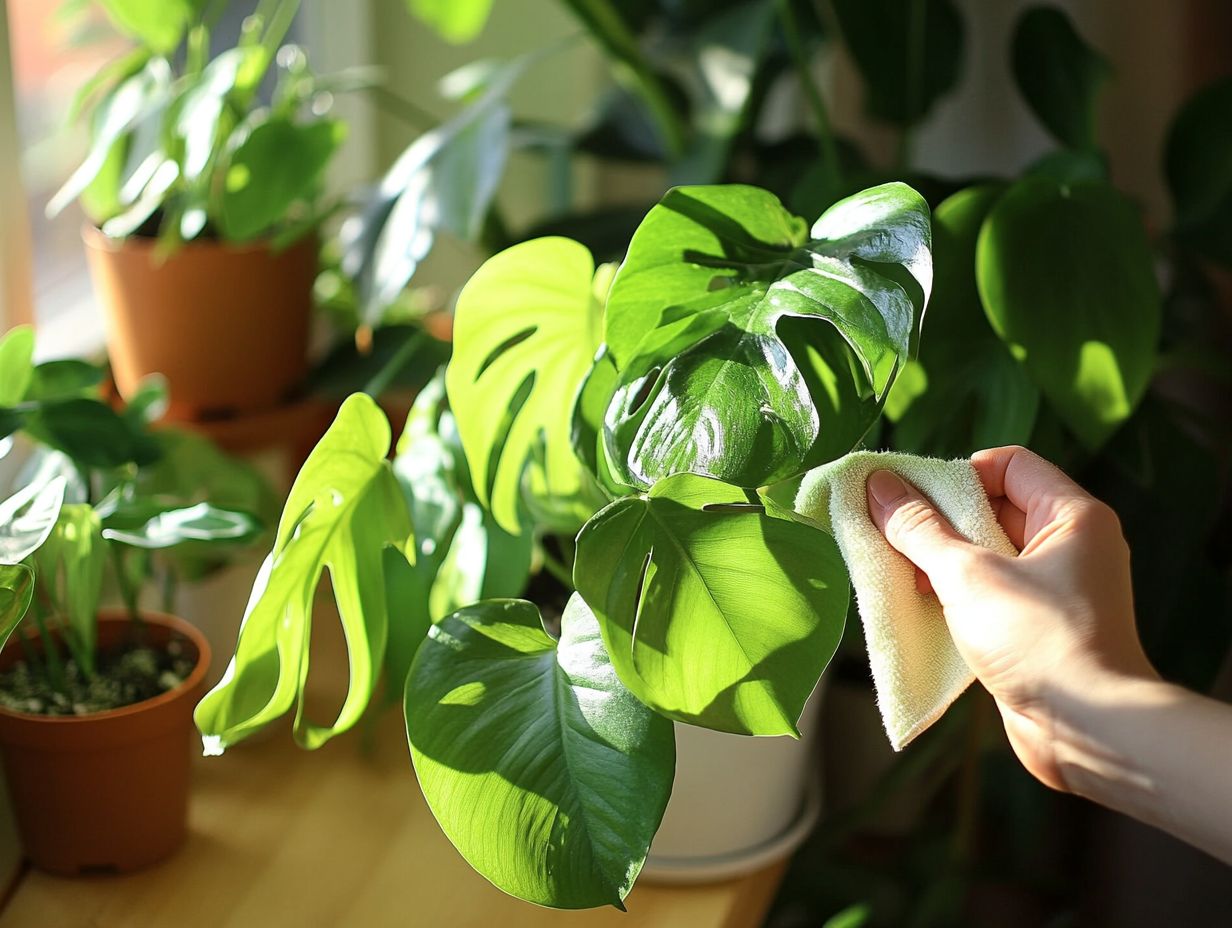
Overwatering is one of the most detrimental practices in indoor gardening. It can lead to root rot, fungal infections, and the decline of otherwise healthy plants due to not watering properly.
Recognizing the early signs of overwatering is vital for keeping your plants thriving. Look out for symptoms like yellowing leaves, drooping stems, and a musty smell from the soil these often signal that your plant is drowning in moisture.
Different plant species, like succulents or bromeliads, have unique water requirements. For example, succulents prefer drier conditions, while ferns thrive in consistently moist environments.
Check your soil moisture levels before hydrating your plants. Make it a habit to water only when the top inch of soil is dry. For more detailed techniques, follow the best practices for indoor plant soil care. This mindful approach promotes optimal growth and enhances the overall health of your indoor greenery.
What Are Some Natural Ways to Keep Pests Away from Indoor Plants?
Using natural methods to keep insect pests away from your indoor plants is effective for nurturing their health. Options like neem oil and introducing beneficial insects are key strategies.
Incorporating methods such as diatomaceous earth, a natural powder that helps control pests, and natural insecticidal soaps enhances your defenses against unwanted invaders. These organic solutions deter pests while fostering a healthier environment for your plants, unlike harsh chemical alternatives.
Using essential oils like lavender or peppermint can create an inhospitable atmosphere for pests while enhancing the appeal of your indoor garden. Employing companion planting strategies where certain plants are paired to repel pests can significantly strengthen your pest control efforts and cultivate a balanced ecosystem in your home.
How Often Should Indoor Plants Be Re-Potted?
Knowing when to re-pot your indoor plants is crucial for their growth and health. Factors such as the size of the plant, the choice of container, and your maintenance routine play significant roles in determining the right timing for this task.
Different plants grow at different rates, affecting how often you need to repot them. For instance, fast-growing species usually require repotting more frequently than slower-growing counterparts, typically on an annual or biennial schedule.
Signs that it s time to repot include:
- Roots pushing through the drainage holes
- Stunted growth
- Water pooling on the surface of the soil
Selecting the right potting mix and ensuring proper drainage will significantly enhance your plant’s stability during this transition. When repotting, gently loosen the root ball and choose a new pot that s only slightly larger than the previous one. This gives your plant room to grow while avoiding potential water retention issues.
What Are Some Signs That an Indoor Plant Needs to Be Re-Potted?
Identifying when your indoor plant is ready for re-potting is essential for its continued health. Look out for indicators like root overgrowth, stunted growth, and yellowing leaves these often signal that it s time for a new container.
Seeing roots emerging from the drainage holes or tightly coiling within the pot indicates that repotting is urgent. Once roots have filled their current home, your plant’s ability to absorb water and nutrients is compromised.
Choosing the right potting mix is key to encouraging healthy root development while retaining moisture. Opt for a slightly larger container to allow for growth, but be cautious too much soil moisture can lead to root rot.
Keep these considerations in mind to cultivate a flourishing and vibrant indoor garden.
Start enhancing your indoor garden today with these essential tips!
Frequently Asked Questions
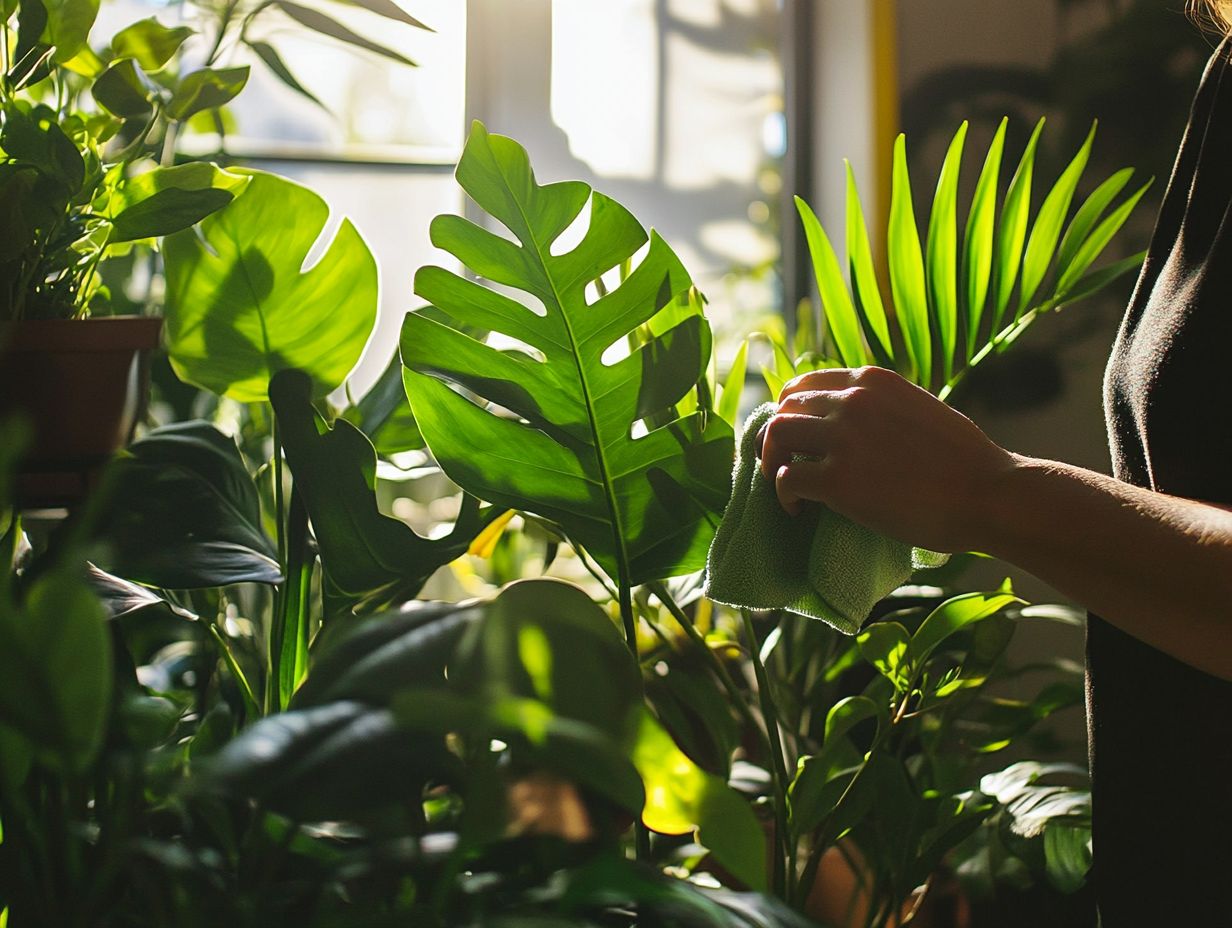
What are the 5 best practices for indoor plant hygiene?
The top 5 best practices are proper watering and drainage, cleaning leaves and pots regularly, monitoring for pests and diseases, using organic fertilizers, and ensuring adequate sunlight and air circulation.
Why is proper watering and drainage important for indoor plants?
Proper watering prevents overwatering and root rot, which can cause your plant to wilt or die. It also helps nutrients and oxygen reach the roots effectively.
How often should I clean my indoor plant’s leaves and pots?
Clean your indoor plants’ leaves and pots at least once a month. This keeps dust away, allowing sunlight to reach the leaves and preventing pests.
What are some common pests and diseases that can affect indoor plants?
Common pests include spider mites and mealybugs, while diseases may involve fungal infections and root rot. Regularly check your plants for these issues and act quickly if you spot any problems.
Why should I use organic fertilizers for my indoor plants?
Organic fertilizers release nutrients gradually, reducing the risk of over-fertilization. They also enhance soil health and support beneficial microbes.
How can I ensure my indoor plants receive enough sunlight and air circulation?
Choose the right spot for each plant based on its light needs. Rotate them regularly to distribute sunlight evenly. A fan can help boost air circulation, keeping pests and diseases at bay.

